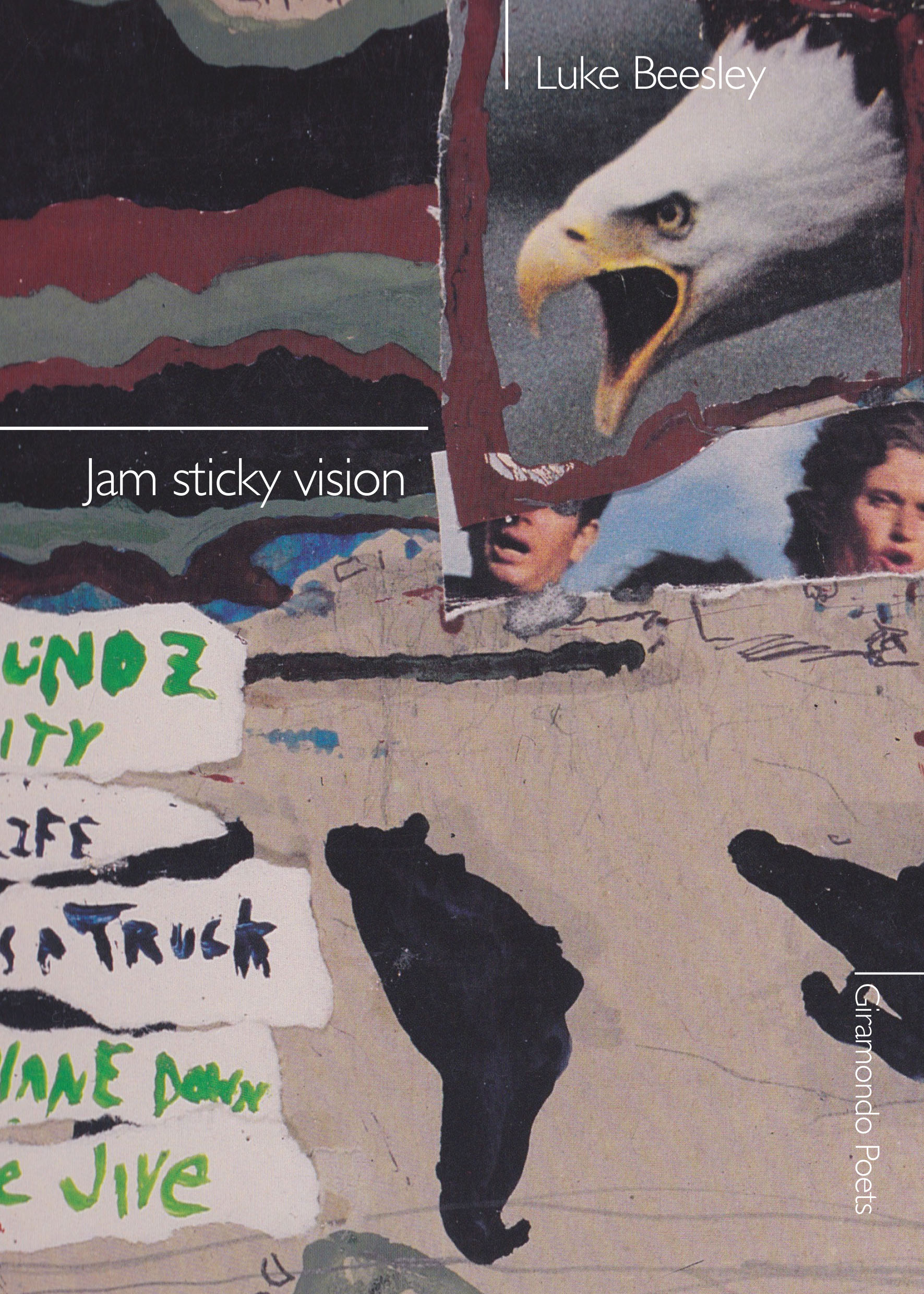A Discoball Concussion: Luke Beesley’s Jam Sticky Vision

It is difficult to read Jam Sticky Vision without wanting the Internet by your side. The poetry collection is riddled with intertextual references, ranging from Finnegans Wake to Terence Malick’s film Tree of Life. Faced with notes on texts both familiar and unfamiliar, the reader is tempted to spend some time Googling before reading on, in hope of enjoying the jammy words to full capacity.
That is not, however, what I did. I read the collection while out bush, in a shack on the Colo river without phone reception and certainly without internet. Forced to take the poetry at word-value, I stalked the creek rocks reading aloud, repeating the stickiest parts. Certain implications, brought by the references, were surely lost—but what was gained was a focused reading.
As well as being laden with links to others’ work and ideas, the poetry is thickly layered with jump-cuts between images, emotions, and states of consciousness. The author’s note speaks of incisions and quick pencil drafting, nodding towards surrealism and abstraction. One wonders what world of bridging words has been erased between what appears on the page. You can either dwell slowly on each word, as though each was a pillar, imagining what once lay in the chasms between—or you can slide along and focus only on the musicality. I suspect Beesley considers words in his poetry in much the same manner as a musician considers lyrics: for their aesthetic, perhaps more than their semantic, value.
This leads to a series of surprising syntactical twists, and an undeniable rhythm, shown right from the opening ‘A Thousand Characters’: “Giraffes with appalling foot rot trot over to the microphone and discoball concussions the wild shining toffee of the dance floor on this afternoon as the moon pierces in.” ‘The Apology’ is a humid trawl through the subconscious, visiting newspapers, coffee shops, and the domestic. Its sentences spiral into the unknown, and end with the shockingly tender note of regret and hoped reconciliation.
After so much shifting of time and place, the direct finish of ‘Double Portrait, Cornflake Sunset’ is a relief: “(He) walks away from the stove, the tail of his shirt spilling with flame if you put flame into a poem it will help. Help.” The sharpness comes to the reader like direct eye contact after hours of mumbling and toe-shuffling in the dust. However, one feels that the uncompromising modernism may run rampant in some poems. The last sentence of ‘Six Minute Mark’ feels to be not a wonder of word-association but an uncontrolled spit, perhaps smacking with showiness: “Wacky nurse stoicism avuncular nail polish decoration codes and pickled insects imported in a lunchbox nursing chopsticks and a newspaper report on his own record pursuit.”
I return to the author’s note and interrogate my own artistic sensibility, which says that experimentation should run feral; but that the publication of work requires paring back and exhibiting only those experiments that align form with theme. What does the reader gain from the way Beesley separates words from their regular usage? Is there perhaps undue emphasis on phonic quality alone—especially for an art form that relies on the written word? Should the poems then be read aloud? What is gained from such thick intertextual references? Is there something that is said by the mention, for example, of Swann’s Way, that could not be said otherwise? Some references feel less like well-wrought responses to others’ work, and more like ‘selfies with Proust’. I compare this to the Proust epigraph from Jennifer Egan’s A Visit From the Goon Squad, where the quote sets up a navigating direction, and thematic framework, for the novel. Perhaps neither is better or worse, but just that Egan and Beesley view intertextuality in differing ways.
All these questions were pressing for me, but I don’t know how other readers will interpret them. This poetry will elicit variable responses, deeply rooted in personal taste, and that’s probably how it should be. Jam Sticky Vision is not something I would be naturally inclined to read again, but when I chose to re-read the poems (several times, in fact), I was delighted I did.
